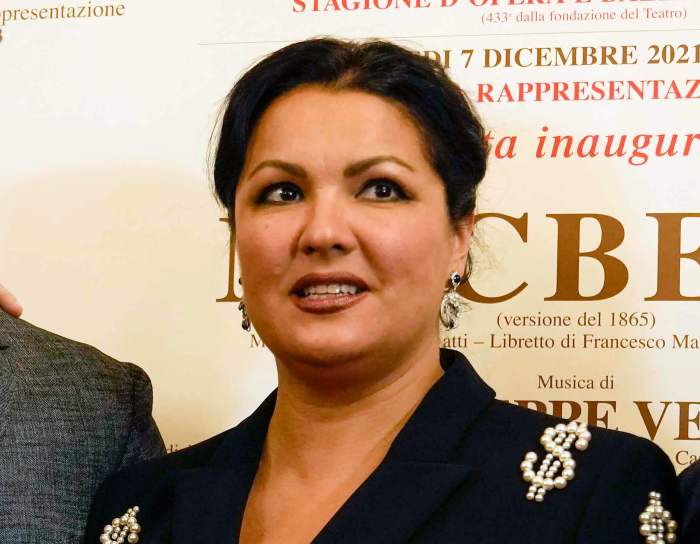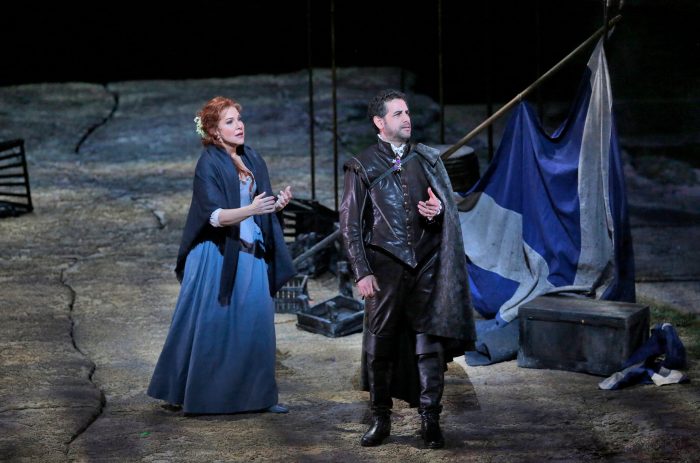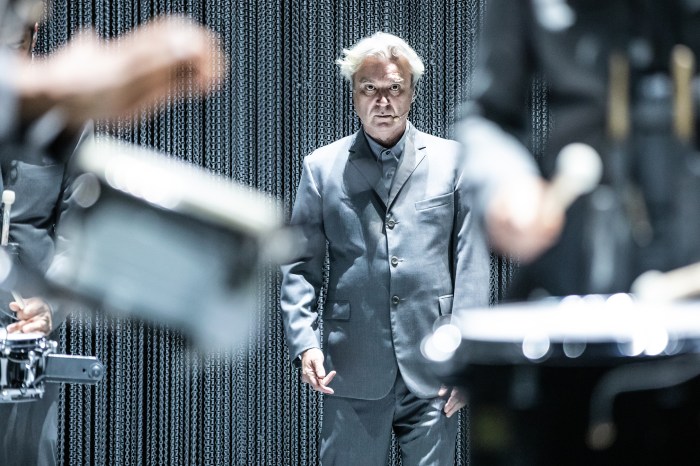Call it bel canto in the Rust Belt.
The Metropolitan Opera’s new production of “Lucia di Lammermoor” plucks the ill-fated heroine out of the Scottish hills where Sir Walter Scott placed her in his 1819 novel and where Italian composer Gaetano Donizetti kept her in his opera 16 years later.
Instead, director Simon Stone has transplanted her to a contemporary American town whose once-prosperous residents are suffering the effects of economic decline and where the pharmacy and pawnshop are among the only thriving businesses.
“It can feel relaxing to escape and go to a Donizetti opera that’s set in a previous era,” Stone said in a panel discussion at the opera house during rehearsal. “But I think it’s less of a transformative experience than if you can go, “Wow, this is about me, my family, us.’”
Stone said he looked for an American equivalent to the original setting and settled on the Rust Belt.
“The novel and opera are about the end of the aristocracy in Scotland, and it became an incredibly poor country very quickly,” he said in an interview. “I wanted to find a place in America where there’s that same sense that the glory days are over, and if you look at the former industrial towns, there’s a lot of drug use, a lot of unemployment. So you have people who are not just desperate, but their pride is wounded.”
Lucia is still lied to, emotionally manipulated and bullied by her desperate brother and his henchmen into giving up her sweetheart Edgardo and marrying a man for his money. But in Stone’s version she’s also a recovering drug addict who relapses once her hopes for happiness are crushed.
For soprano Nadine Sierra, the updated setting helps her identify with her character.
“There’s a portion of this Lucia I absolutely get,” she said in an interview. Growing up in “not the most glitzy” neighborhood in Fort Lauderdale, Florida, she recalls being bullied in school and getting into a series of emotionally abusive relationships with men in her early 20s.
“I feel as if I’m playing myself,” in this production, she said. “How I would react to the way Lucia has to live her life.”
Lucia’s reaction is, to be sure, extreme by any measure: She kills her new husband on their wedding night — in this production by striking him with a fire extinguisher in their cheap motel room. (“She grabbed anything she could,” Sierra said.)
That act leads to the famous “mad scene,” an extended showpiece for sopranos notable for the intricate vocal line and elaborate ornamentation that typified the bel canto style of early 19th century Italian opera.
But to Sierra, the term “mad scene” may be a misnomer.
“I don’t think Lucia is necessarily crazy at the end,” she said. “I think she’s had enough. She’s so tired of her whole world collapsing on her. … She does murder her husband, but you know these things do happen.”
When Peter Gelb, the Met’s general manager, decided on a new production of “Lucia,” he said he thought of Stone because he’d been impressed with his work on two theatrical classics, Federico Garcia Lorca’s “Yerma” and Euripides’ “Medea.”
“The way he approached the tortured female characters at the center of each of those plays,” Gelb said, “I thought ‘Lucia’ would be an opera that would appeal to him.”
Sierra said as soon as she found out who her director would be, she got in touch with soprano Pretty Yende, a good friend who had starred in Stone’s production of Verdi’s “La Traviata” in Paris.
“Pretty told me it would be a bit more complex, more technological than what we’re used to in bel canto operas,” Sierra said.
That may have been an understatement. As in his “Traviata,” Stone makes extensive use of video projections, some pre-recorded and some to be filmed live during performances. These include shots of Lucia painting a portrait in her room (a skill she may have picked up in rehab, Stone said) and dreaming about a life with Edgardo she never gets to enjoy.
“Most of the filming is about trying to get into the inner life of this woman,” Stone said. “So much of this opera is about men’s opinion of how women should behave, of what she should do.
“If you don’t get a chance to see her interior life then all you see is a trapped animal,” he said. “But she only becomes a trapped animal when she’s around those guys. When she’s on her own, she’s totally autonomous and powerful.”
Gelb is aware that any drastic reimagining of a beloved classic may meet resistance from some in the audience. But he’s confident most people will judge this “Lucia” on its merits.
“I believe the opera public at the Met is more sophisticated theatrically than when I started 16 years ago,” Gelb said. “And they are generally more open to new experiences, providing they make narrative sense and are stimulating both musically and theatrically.”
Audiences worldwide will be able to judge for themselves when “Lucia” is broadcast to movie theaters live on May 21. The production, which opens April 23, also stars tenor Javier Camarena as Edgardo, and baritone Artur Rucinski as Lucia’s brother, Enrico, and will be conducted by Riccardo Frizza.


















